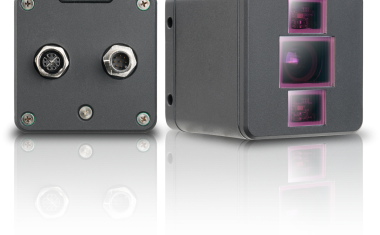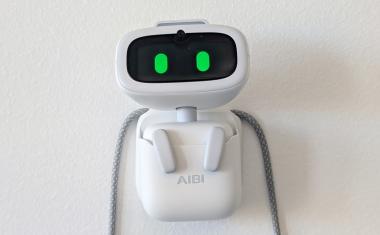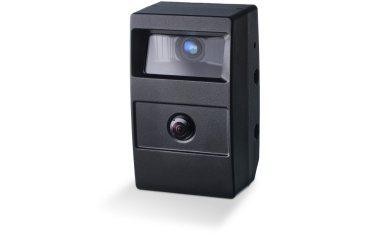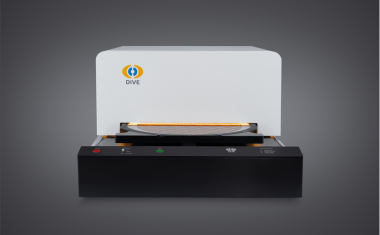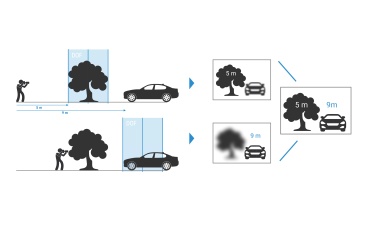New Possibilities
Otto Junker simplifies measuring processes at its stainless steel foundry with a Leica Geosystems Laser Tracker. The high quality of the machined parts speaks for itself due to the measuring accuracies achieved.
When viewed from the outside, the interior of the stainless steel foundry at Otto Junker GmbH appears to be pitch-black. „Therefore the lads have to be as bright as buttons," quips Ulrich Tigges with a smile alluding to the extremely difficult conditions in the foundry which are so demanding on his colleagues. Tigges is Fabrication Shop Manager for Otto Junker GmbH in Simmerath-Lammersdorf, an Eifel township in southwest North Rhine-Westphalia, only a stone‘s throw from the Belgian border.
Otto Junker, the company, has been in existence since 1924. Originally Otto Junker just built foundries. However, from providing furnaces for his customers over the years, he developed a new, separate side to his business, which operated independently of the heavy production engineering division.
Ownership of the corporate group today lies with the Otto-Junker-Stiftung, a trust dedicated to the promotion of engineering training. „It is certainly something special to work for a trust," declares Ulrich Tigges. „The close cooperation between Otto Junker and its customers is based on adopting a reasonable, calm manner of addressing one another, mutual understanding and open communication."
Turned Components up to 6 m Diameter
As time went by customer requirements changed. New processes led to requests for more and more machined castings. The Otto Junker foundry, a specialist in stainless steel and special materials, is in the position to offer the customer a complete package. The core business produces components for the chemical, pharmaceutical and food production industries. „Turned components are in great demand," explains Ulrich Tigges. „We use turning mills capable of machining castings up to 6.30 m diameter."
Until 2007 Otto Junker GmbH used conventional measuring instruments, such as calipers or micrometer screw gauges. But handling 6 m diameter castings when using these tools is an extremely complex task: the measuring equipment requires continuous attention and its accuracy must be maintained. Furthermore, some shapes just cannot be measured by conventional means, for example radii and sloping surfaces that run into one another. In these cases diameters are theoretical dimensions of sections which do not in fact exist on the casting and must be construed during measurement. Faced with this situation, the management at Otto Junker decided to carry out measurements directly on the machine using state-of-the-art, software-controlled coordinate metrology, without the need for extra production operations - with immense time savings. The machined castings that leave the fabrication shop have to comply with the tightest of tolerances. Ulrich Tigges: „The ranges of accuracy we are dealing with here are quite incredible. Formed parts with a diameter of 4 m have to be accurate to 3/100 mm. In a very tough environment, this simply cannot be done using conventional methods."
A Short Time Window for Measuring
The search for the right measuring solution then took Junker along a very specific path. One customer had been using a measuring arm for a long time. Components with diameters of 6 m soon pushed this type of systems to its limits. Ulrich Tigges was already familiar with laser measuring techniques: as a previous employee of the Geodetic Institute of the Rheinisch-Westfälische Technische Hochschule Aachen (RWTH) he had come across the procedure and had been surprised at the accuracies that Laser Trackers could actually achieve. Several manufacturers demonstrated their trackers. Staff at Otto Junker were skeptical because there was one requirement of the new system that could not be fulfilled: all components, including future components, had to be covered by the new measuring equipment. Up stepped a solution from Leica Geosystems into the limelight: the ability of the wireless probe, the Leica T-Probe, to measure even hidden points, captured the imagination of the foundry staff. „Operating comparable systems demanded a lot of patience. A time window of about 30 minutes per measurement was not long enough for the other systems," noted Tigges. The much greater user acceptance by the foundry staff was the crucial factor for adopting the solution from Leica Geosystems. Otto Junker then purchased a Laser Tracker, which was preconfigured for 6 DOF solutions. A Leica T-Probe is due to be added at some time in the future: Tigges and his colleagues prefer to add to their metrology systems in stages.
Shortly after delivery of the system an acceptance measurement was carried out. For the first time, the new system had to prove its capabilities. „Our craftsmen are accustomed to battling with tenths or hundreds of a millimeter and are very experienced. They were suitably curious - in their view the Tracker had first to prove itself," recalled Ulrich Tigges. The acceptance measurements showed that the new Tracker had fully achieved all the required accuracies.
The training offered by Hexagon Metrology and undertaken by the department heads began with the theory behind the metrology equipment and the PC-DMIS software. There followed some intensive practical simulations. Each step was practiced in a peaceful assembly room: how do you measure a circle, a cone or a single point? A trainer from Hexagon Metrology showed them how. Now we have six employees who can operate the system. They will pass on their knowledge of how the system works to their colleagues. The greatest challenge for users is to verify their own measurements. „Small cones with diameters of 2.5 m and a height of 15 mm at an angle of 10° are very hard to capture. But with a ½" reflector sphere we can also achieve very reliable results. The graphical display in the software is a huge help."
Measurement Process
Follows Production
The measurement process at Otto Junker follows the production sequence for the castings in the fabrication shop. The parts emerge from the foundry and are taken out of the mould after two or three days. It is one or a maximum of two weeks until a part is ready for further processing. First of all it is roughly measured using a tape and inspected for casting defects to exclude undersizes. The part is then moved, for example using a crane, on to the turning mill. Every part is stressed differently and orientated to take into account of incipient cracks. The first coarse machining is carried out to within 3 mm of the final shape. After this 20-50 hour long process, the crane lowers the cast part down from the turning mill. The part then rests for several days to allow the strains in the material to be released: the component changes shape during this time - it must „relax". As soon as the next stage of processing begins, the Laser Tracker from Leica Geosystems comes into continuous use. Thin-walled castings with wall thicknesses of only 20 mm move on the turning mill. Therefore they have to be machined more than once and measurements have to be taken from both sides in relation to one another. It is remeasured in 0.5 mm steps until the specified dimensions are achieved. When the part comes within 1.5 mm of the finished dimensions, it must be measured in cycles of three to four hours until the final dimensions are achieved. „In this way we can and will in the future work increasingly faster with the help of the Leica T-Probe," says Ulrich Tigges. „We have also discovered that we can only measure with great difficulty near the machine. The better option is to do it while the component is still mounted. We have so many crane and lorry movements in the shop - therefore it is better if the Tracker remains near the machine. Around the machine the floor plates are more stable and thicker." Deviations are kept within a very small range. It soon became accepted that the new measuring system was operating reliably.
The Leica Geosystems Laser Tracker also alerted the team to further possible applications. The tracker was a great help when assembling a new turning mill. Ulrich Tigges recalled: „We measured the base for the machine where the table runs on an oil carpet. These tracks have to be parallel to one another and are bedded by hand. Using the Laser Tracker, within a week and a half we had surveyed the tracks - and what we learned from the measurements led to significant savings in time and costs. The 63 t table was quickly installed in the machine." The Leica Geosystems Laser Tracker was also useful in checking the machine. Compensation must be made for wear on the cutting tools. Precise measurement results can tell you the tolerances within which a machine is operating.
„Our highest priority is to keep production running," concludes Tigges. „As we always have a component being processed, it is essential that the metrology system works 100 %. We were well advised by Hexagon Metrology. The precision of the Leica Geosystems solution and the PC-DMIS software was exactly what we needed. The system makes our everyday work much easier."







